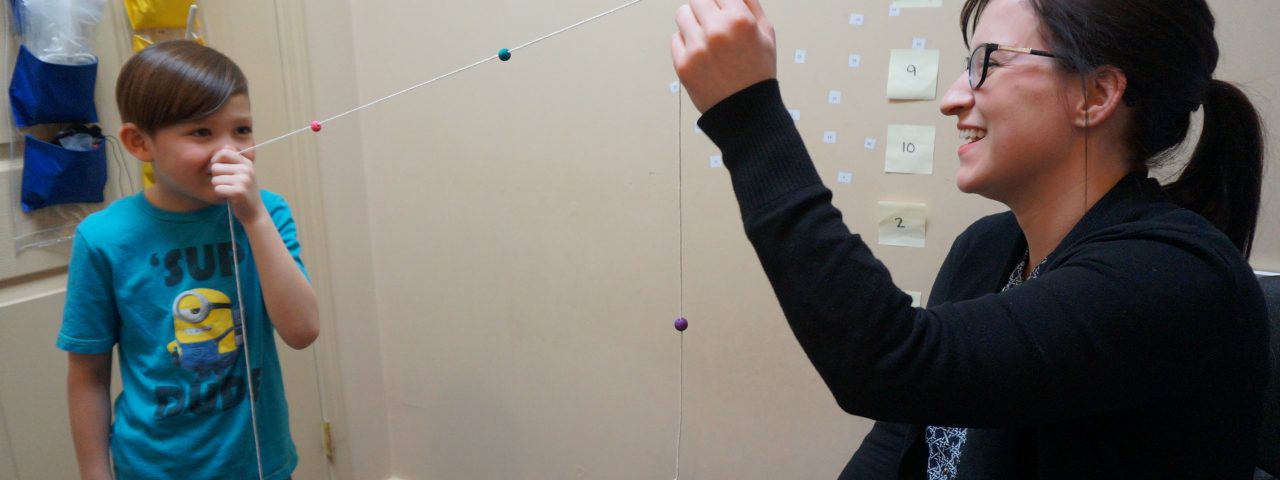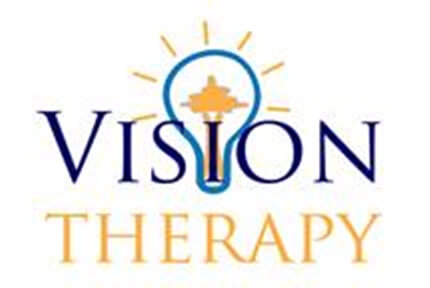By: Evelyn Zhang, University of Waterloo Senior Optometry Intern
Vision therapy may be a foreign concept to many. What is it? How does it work? Will I benefit from it?

Vision therapy is used to improve eye movement control and eye coordination. It is often used to treat strabismus (eye turn), amblyopia (lazy eye), oculomotor dysfunction (eye tracking deficits), and other binocular vision disorders. Vision therapy also promotes better visualization, visual perception, and eye-hand coordination skills. Vision therapy involves a series of exercises and procedures carried out under the supervision of an optometrist or vision therapist. It works by strengthening existing neural connections or build new connections between the eyes and the brain to streamline eye coordination and visual processing.
Below we will learn more about vision therapy and discuss a few misconceptions of vision therapy.
Myth #1 – Vision therapy only works for kids.
Vision therapy is effective for people of all ages, not just children. Vision therapy works by strengthening the neural connections between the eyes and the brain to allow the two eyes to work more effectively and comfortably in coordination. Studies have shown that adult brains are plastic and is capable of changes and improvements, which provides the basis for vision therapy.
Whether you have a longstanding strabismus (eye turn) or binocular vision deficiency, or you are experiencing headaches and discomfort with reading or computer work, you will benefit from a thorough binocular vision assessment by an optometrist who may recommend vision therapy to improve your visual function. Adults with acquired brain injuries and concussions will also benefit from vision therapy. Since majority of the brain is involved with vision, visual symptoms such as visual fatigue, light sensitivity, and blur often appear or worsen after a brain injury. Vision therapy will re-teach the brain to better process visual information by strengthening the neural connections that were affected by the concussion.
Myth #2 – The effects of vision therapy is not life long
When vision therapy is performed under the direction of an experienced optometrist or vision therapist and with adequate practice of the visual skills by the patient, the benefits of vision therapy will last a lifetime. Vision therapy works through building new and strengthening existing neural connections between the two eyes and the brain, effectively re-teaching the brain to use the two eyes more efficiently. Changes in the brain are long lasting, allowing skills gained through vision therapy to last for a lifetime. As well, the newly gained skills is practiced and solidified through everyday tasks. Similar to learning how to ride a bike, the visual skills learned through vision therapy is not something your eyes can easily “forget.”
Myth #3 – I don’t need an eye exam or vision therapy if I can see well.
Many people believe that if you’re seeing 20/20, it means your eyes are perfectly healthy and visits to the optometrist are not needed - but that is not the case. In fact, many serious eye diseases, such as glaucoma and diabetic retinopathy, won’t start to affect your vision until the end stages of the disease. Regular eye exams by an optometrist will ensure that your eyes are not only seeing well, but they are healthy as well. An optometrist will also thoroughly assess binocular vision functions, which tells you how well the two eyes are working together as a team. It is possible to have binocular vision deficiencies even if your vision is 20/20. As a matter of fact, many of our vision therapy patients have 20/20 vision and don’t wear glasses.
Deficits in binocular vision may present as discomfort and difficulties with reading or computer work; symptoms include eye strain, fatigue, headaches, double vision, lack of attention, and blurry vision. Majority of those symptoms can be eliminated or reduced with vision therapy. Although it is important to have good vision, it is equally important to assess all aspects of ocular health and binocular vision by an optometrist to ensure your eyes are free from disease and are working optimally as a team.
Myth #4 – Vision training won’t help if my child has a learning disability.
Since so much of learning is done visually, the improved visual function and visual processing achieved through vision therapy may in fact enhance learning in children who have been labelled “learning disabled.” Many common ocular conditions, such as convergence insufficiency, accommodative dysfunction and oculomotor dysfunction (eye tracking deficiency), will cause discomfort and difficulties while reading. The child may avoid school work or lose attention easily as a result. The symptoms of binocular vision disorders actually overlap with the symptoms commonly associated with ADHD and learning disorders. Therefore, it is important to see a developmental optometrist to identify these visual issues.
Convergence insufficiency, the inability to keep one’s eyes turned in while reading, is a common binocular vision disorder that can cause double vision, eye strain, fatigue, lack of attention, poor comprehension, and the feeling that “words are moving on the page.” Oculomotor dysfunction, or eye tracking deficit, will cause the child to lose their place while reading, skip words or lines, re-read lines, and poor reading comprehension. Accommodative dysfunction often cause blurry vision, headaches, difficulty switching focus between far and near objects, eye strain, and difficulty concentrating.
Vision therapy can treat all of the binocular vision deficiencies mentioned above. Vision therapy will help the child improve their visual skills, which better prepares them for the academic environment. Vision therapy teaches the child to better coordinate their two eyes, and allow them to read more comfortably for longer periods of time. It is important to note that visual function is not the sole factor in learning, so parents may still need to pursue other avenues to encourage better learning for their child.
Myth #5 – There is no need for in-office therapy, doing exercises at home is just as effective.
Even though vision therapy exercises performed at home can be effective, studies have shown that in-office therapy sessions result in the greatest improvements. The Convergence Insufficiency Treatment Trial (CITT) compared the efficacy between in-office vision therapy, at home vision therapy and placebo for the treatment of children with symptomatic convergence insufficiency. The results of the study showed that in-office therapy is drastically more effective than other treatment options.
In-office vision therapy allows the vision therapist and the optometrist to better monitor each patient’s progress from week to week in order to tailor the exercises appropriately. The patient is reinforced on the proper technique for each exercise and receives constructive feedback at every in-office session to help further improve their visual skills. Also, a variety of therapy equipment and computer based programs are available only in office. With regular monitoring and support from the vision therapist or the optometrist, it’s no wonder that in-office vision therapy is a more effective way to treat a variety of binocular vision disorders!
References
Seiderman AS. Overlooked: 20/20 is Not Enough. Optometric Extension Program Foundation; 2012.
Scheiman M, Cotter S, Mitchell GL, Cooper J, Kulp M, Rouse M, et al. A Randomized Clinical Trial of Treatment for convergence Insufficiency in Children. Arch Ophthalmol. 2005; 123: 14-24.
Scheiman M, Wick B. Clinical Management of Binocular Vision, 4th Ed. Philadelphia: Wolters Kluwer; 2014.

